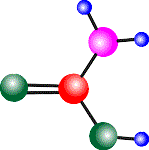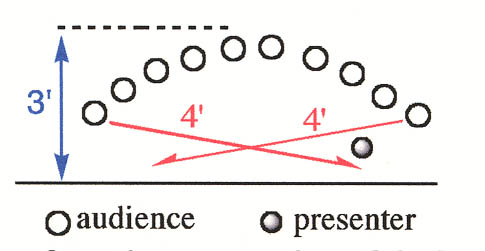 |
Chem 215/217 Poster Assignment |
 |
|
1. Requirements 3. Guidelines 5. Awards 6. Additonal Cain Project Poster Resources |
| Printable PDF version of this site |
1.1. Turn in your poster topic one month after the first lab
1.2. Turn in a physical poster one week before the poster session
(Strictly Optional: If you prepare a handout turn that in as well)
1.3. Present your poster during the poster session - five minutes maximum to present the poster and three minutes to answer questions
Poster Features:
- Poster size should ideally be 32”x40”, possibly less, but by no means should it exceed 34”x43”
- Poster should display a three-step transformation:
Starting Compound Intermediate Product A Intermediate Product B Final Product OR Starting Compound Intermediate Product Final Product and Starting Compound 2 Final Product 2 OR Starting Compound Final Product and Starting Compound 2 Final Product 2 and Starting Compound 3 Final Product 3
- Chemical structures should be drawn in ChemDraw or a similar program
Note: Students can make minor changes to their poster during the week before the poster session, but this should be the exception rather than the rule.
Here's your chance to be creative while investigating problem that interests you. This assignment asks you to research an organic chemistry process, issue, or question and explain it to other class members through a well designed poster.
The poster session in class Chem215/217 will help you become familiar with the features of a good poster. This handout will guide you through the poster design process.
It is preferred that you choose an organic process that requires a three-step reaction. However, you may choose an alternative (See examples above).
If your topic covers only one simple compound that can be synthesized in one or two steps, please modify the topic to include at least one other compound with similar properties.
Example: Kevlar is a polymer that can be obtained in two steps from 1,4 dibenzoic acid. You can add another polymer with similar properties to the poster and show its synthesis as well, comparing the two.
To find a topic:
- skim your Vollhardt and Schore textbook
- browse some of the most recent issues of popular chemistry magazines such as Chemical & Engineering News (call #TP1.I616) or Chemistry in Britain (call # QDI.C76)
- check out the web site, www.chemistry.org
Your poster should go through the relevant organic transformation(s) from the starting compound to the final product and you should be able to explain the mechanisms involved in each step. You can search for mechanisms in the literature or ask a teaching assistant for help.
The following books might be of assistance in rationalizing the mechanisms involved in the project you select:
- Jie, Jack Li. Name Reactions: A Collection of Detailed Reaction Mechanisms. Springer, 2002.
- Ahluwalia, V. K. & Parashar, R.K. Organic Reaction Mechanisms. CRC Press, 2002.
- Laue, L. & Plagens, A. Named Organic Reactions. Wiley, 1999.
- Smith, M.B. & March J. Advanced Organic Chemistry, (5th edition). 2001.
- Mundy B.R. & Ellerd M.G. Name Reactions and Reagents in Organic Synthesis. Wiley, 1988.
- Wang S. et al., Orgo Cards. Barron’s Educational Series, 2002.
- Grossman, R. The Art of Writing Reasonable Organic Reaction Mechanisms. Springer, 1998.
3. Guidelines
Follow the advice below to ensure that you have legible images and structures.
- Make your poster in PowerPoint or a similar publishing program. These programs are available on many Owlnet computers. Ask your TA to teach you how to draw chemical structures in specialized program if you need help.
- There is no need to put all of the details on your poster, but include the organic transformation(s) from starting compound to final product and be able to explain the mechanism on each step.
- Do not forget to indicate reagents and conditions used on each step. Avoid including too many details on the reaction schemes.
- Explaining the mechanisms clearly will help your audience integrate a great deal of chemical information covered on the poster and make sense out of abstract chemical structures. When the subject is difficult to explain verbally, provide handouts to reinforce your explanation. Handouts with supplementary information are very handy when you have limited poster sizes and only a few minutes to present the topic.
- ChemSketch 5.0 http://www.acdlabs.com
All the images on your poster, including pictures taken from books, journals, handouts, etc. should be visible from a distance of 3 to 6 feet.If you are using PowerPoint to create your poster, you can adjust the size of your image by dragging from the corner points. Hold the shift key down to ensure that the proportions of the images remain constant as you enlarge the photo. Images can also be enlarged in Photoshop (before they are inserted into the poster) by changing the size under "Image." However, when a 1" jpeg, gif, or bitmap picture is stretched to 8 or 10 inches or more, it becomes blurry or pixilated and is not legible, so pay attention to the quality when enlarging images and make appropriate changes from the "Image" menu.
6. Additonal Cain Project Poster Resources
Vist the Cain Project web Site for additional resources
Click on the Resources link on the Cain Project Home page to find additonal resources on poster design.

